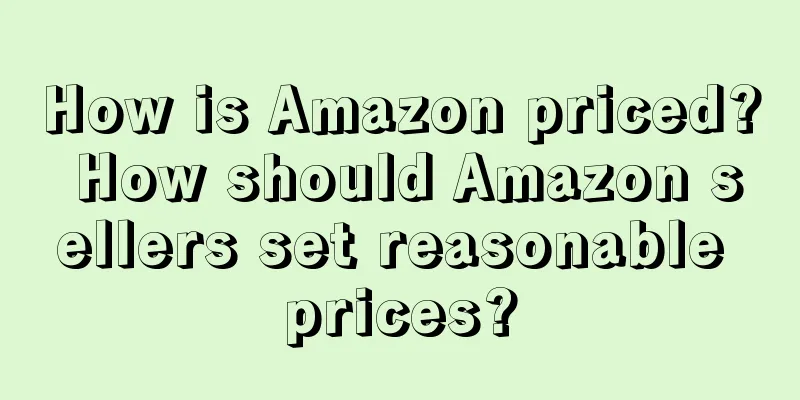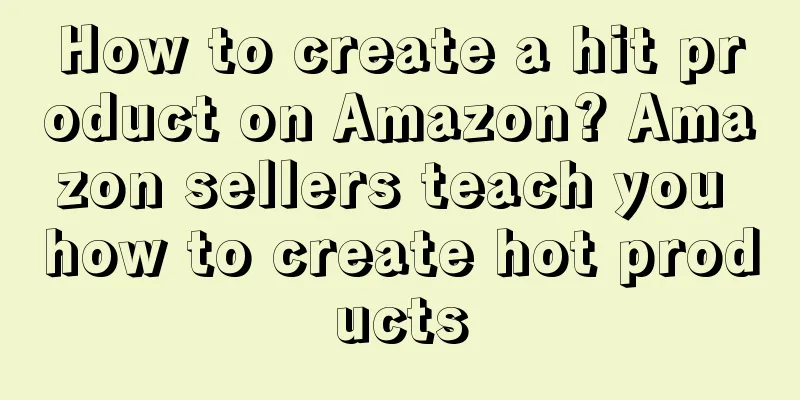There are many factors that affect the price of Amazon products, and many sellers like to set the price of their products based on the prices of their competitors. In fact, this practice is wrong. Each store on Amazon has different profit goals and product pricing policies. There are many factors that affect sellers' pricing. Each store has different profit goals. Today, let's learn about what kind of Amazon product pricing strategy can ensure that it is invincible in the competition?
1. Factors affecting the market
1 Market supply and demand
(1) Market supply and demand have a significant impact on product prices. When a new product is launched, the price will go up accordingly because “scarcity makes things valuable”. Later, as other sellers distributed the product in large quantities, buyers' choices became more diverse. In order to compete with each other, sellers will lower their prices and their profits will also decrease.
(2) Competitors’ prices. Sellers know each other and compete with each other. Your competitor's prices can serve as a reference for your own pricing.
2 Finished products
(1) Platform monthly rent and commission. In addition to paying monthly rent, the Amazon platform also charges sellers a corresponding commission based on the different categories of products they sell.
(2) Production costs. Includes costs of raw materials, R&D, production, labor, etc. Sellers who do not choose factories can develop and purchase products in the market. The cost is high and the selling price will rise accordingly.
(3) Transportation costs. From the time products leave the factory to the time they are sold online, transportation costs are an indispensable link and will also affect the selling price of the products.
3 Enterprise factors
Expected profit: Buyers have confidence in their products, and the higher the expectations, the higher the price will be.
Brand image positioning: Target the low-end market with low prices; mid-end market with moderate prices; high-end market with high prices.
Marketing and promotion expenses: In order to expand promotion, paid operations will be carried out on social platforms inside and outside the site.
Capital turnover: In order to boost sales, a price war may be launched to stimulate the market
Other factors: consumption habits of customer groups in different countries.
2. Understand the market and compare prices
Amazon is a large platform, and you can check competitors’ prices with just a few taps. Because each store has different profit targets and pricing policies, if you copy other people's prices just to save time and effort, you will bring risks to yourself. If the category chosen by the seller is highly competitive, the price can be lowered appropriately; if the selected product is relatively unpopular and there is little competition, the price can be increased appropriately.
3. The Secret Between Price and Sales
1. Sellers prefer to buy products with quality assurance
For similar high-value products, such as jewelry, the store sets a high price but people still buy it. If the sellers’ products are similar, then the product ratings will be increased. Comments and rankings are more convincing.
If a product has been on the shelf for a long time, has a large number of reviews, is ranked high, has a high score, and has a good reputation, buyers will feel that this is a product that has been tested in the market and they will feel at ease buying it even if it is expensive.
2. Lower prices boost sales
Sellers who want to make quick money in short-term transactions or whose products are not competitive earn conversion rates by lowering prices.
In order to build up popularity, sellers who are just starting out set low prices to attract buyers, and then raise prices once the product has a certain sales volume.
Use low-price sales as a marketing strategy and promote low prices for a long time. This type of seller is generally very powerful and has good control over product quality, cost, and supply. There is enough profit margin in large-scale sales.
After knowing so much, some people asked, how can I set the price to ensure the maximum profit?
1 Amazon’s pricing formula.
We have to mention Amazon’s own FBA delivery.
FBA selling price = (product cost + FBA first leg + FBA fee) * (1 + profit) / (1- commission)
Product costs: production, promotion, taxation, labor, etc.
Commission: Different commissions are charged according to different categories, 8%-15%
FBA first leg: logistics transportation fees, customs clearance fees, warehousing, return damage rate...
2 Pricing methods for products at different stages.
New arrival. In order to give buyers a good experience and allow products to enter the market quickly, prices can be lowered appropriately.
Product growth stage. When the seller's product sales, positive reviews, and star ratings have some basis, and sales are on the rise, the price can be appropriately increased.
Product maturity stage. When sales are stable and the product has accumulated considerable popularity in the market, the price can be adjusted higher than the market price.
Product decline period. When new products with better functions are launched on the market, buyers can clear out their stocks of products in the declining period by selling them at a discount or with free shipping.
4. Tips for Amazon product pricing
1. The hypnotic effect of the number “9”.
I believe that when you go to the supermarket, you will see many commodities priced at 9.9, 19.9 or 99.9... Compared with products priced at 10 yuan, 20 yuan and 100 yuan, we are more willing to buy those with the number 9. Although the difference is only 0.01, the one with 9 makes me feel the difference of two or three digits. I would rather spend 9.9 than 10 yuan, and I would rather buy 19.9 than 20 yuan. I believe everyone is familiar with this little psychology.
2. Differential pricing.
Display and price products of the same series with similar functions together, and try to launch high-priced products to influence low-priced products. Through tiered pricing, there are price differences among products, which stimulates sales.
5. Amazon product price adjustment strategy
Adjust prices during promotional seasons and holidays according to market demand.
If prices are adjusted due to other reasons (such as cost, labor, and freight increases), the ranking will be affected after the price is increased, and sales volume will also change accordingly. Unless there are special circumstances, it is not recommended to change prices frequently.
How to price products at different stages?
Although we know the pricing formula, the pricing ideas are different for products at different stages.
1. New product launch stage
When a seller's product is first put on the shelves, there are no good reviews, no star ratings, no loyal fans, and the product is not competitive. At this time, in order to allow the product to quickly enter the market, sellers may wish to set a lower price. However, it cannot be set too low, as that will not only prevent you from making the profit you deserve, but will also cause buyers to underestimate the value of the goods and even suspect that you are selling fakes.
2. Product growth stage
When the seller's products have improved in sales volume, positive reviews, and star ratings, sales are steadily increasing, but there are still few loyal customers. At this time, the seller can raise the price slightly. Or keep your price slightly lower than your competitors.
3. Product maturity stage
When your product sales have become stable, performance indicators are very good, and you have accumulated a lot of popularity in the market, your performance has far exceeded that of ordinary sellers, or you have created a hot-selling product or a quasi-hot-selling product. So, for products at this level, the price comparison function has weakened and it represents the brand image and store positioning more. Then the seller can safely adjust the price higher than the market price. Loyal buyers will not leave just because you raise the price.
4. Product decline stage
It is impossible for a hot-selling product to maintain hot sales forever. After the product has become popular in the market, it will slowly enter a period of decline. As more perfect new products are introduced into the market to replace the old ones, consumer loyalty will decline, demand will gradually weaken, and sales and profits will be much less than before. At this time, some discount promotions can be adopted, such as full-scale discounts and free shipping.

